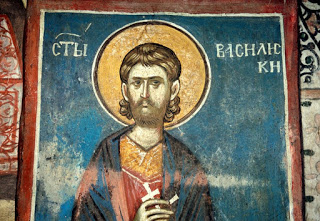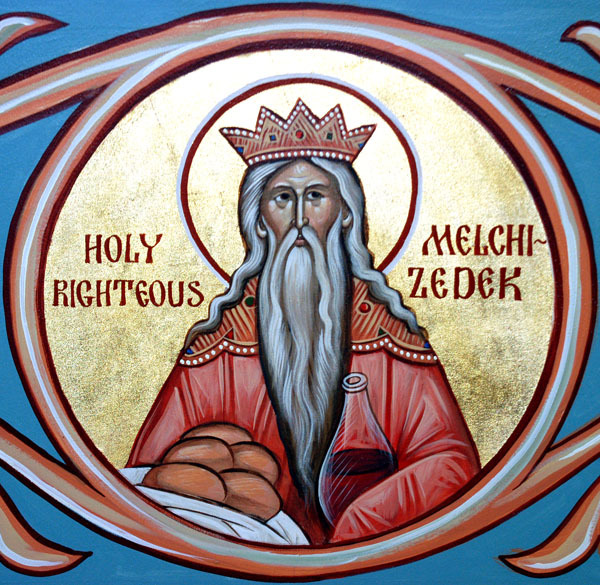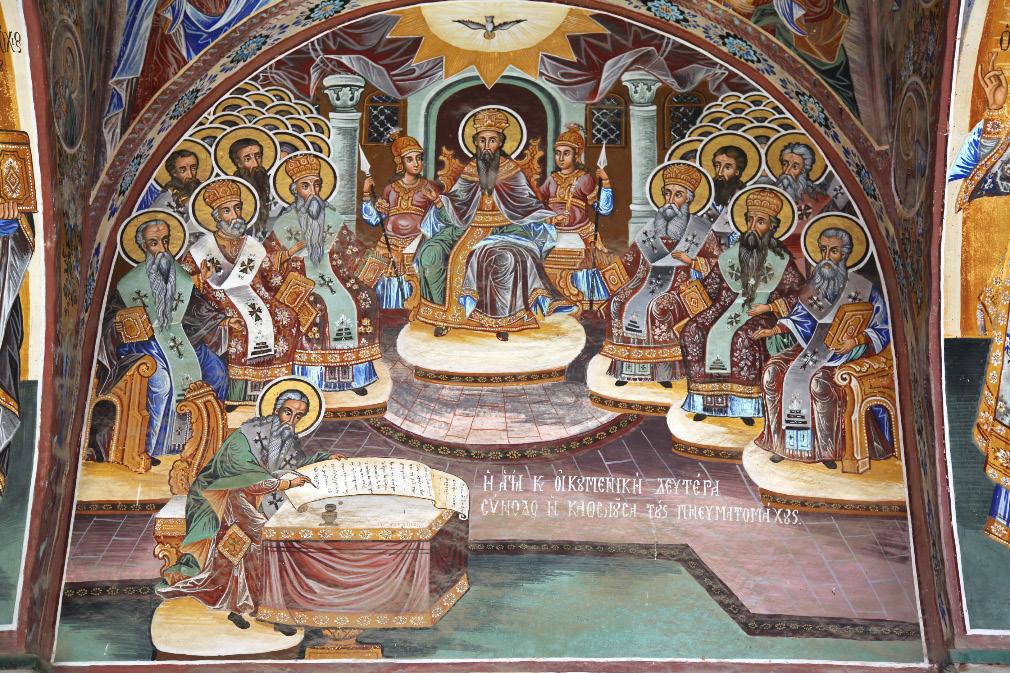- Dec 28, 2017
- 3,779
- 2,856
- Country
- United States
- Faith
- Christian
- Marital Status
- Private
Orthodox Saints and Feasts
Orthodox Saints for May
And
Lives of the Saints
And
Living with the Church – Orthodoxie.com
May 21
† Holy Equals-to-the-Apostles Emperor Constantine (337 A.D.)
and Helen, his mother (327 A.D.)
Saint Constantine was born in 272, the son of Constantius Chlorus, ruler of the western part of the Roman Empire, and St Helen. When his father died in 306 he was proclaimed successor to the throne. The empire was ruled at that time by several Caesars, each with his own territory. When Constantine learned that the Caesars Maxentius and Maximinus had joined against him, he marched on Italy. It was there that, on the eve of a decisive battle outside Rome, he saw in the sky a radiant Cross with the words "In this sign conquer." He ordered that a battle-standard be made bearing the image of a cross and inscribed with the Name of Jesus Christ. The following day he and his forces attacked and won a spectacular victory. He entered Rome in triumph and in 312 was proclaimed "Emperor of the West" by the Senate. (His brother-in-law Licinius ruled in the East.) Soon thereafter he issued his "Edict of Milan," whereby Christianity was officially tolerated for the first time, and persecution of Christians ceased. (Many believe, mistakenly, that the Edict made Christianity the only legal religion; in fact, it proclaimed freedom of religion throughout the Empire).
Licinius, though he pretended to accept the Edict, soon began persecuting Christians in his domain. In response, Constantine fought and defeated him in 324, becoming sole Emperor of the entire Roman Empire. In 324 he laid the foundations of a new capital in the town of Byzantium; in 330 he inaugurated the new capital city, naming it "New Rome" and "Constantinople." In 325 he called the First Ecumenical Council at Nicea, attending its sessions himself. Shortly before his repose in 337, he received Holy Baptism; he died on Holy Pentecost, at the age of sixty-five, and was interred in the Church of the Holy Apostles in Constantinople.
St Constantine's holy mother Helen, in her role as "Augusta" of the Empire, founded countless churches. She traveled to Jerusalem and found the True Cross on which the Lord was crucified. In the Holy Land she established churches at the sites of Christ's Nativity and burial, which still stand today in much-modified form. She died at about eighty years of age.
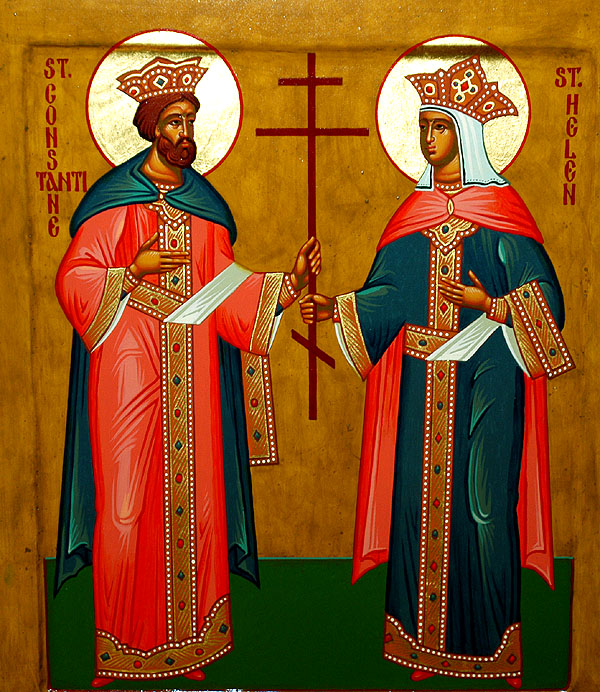
• Holy New Martyr Pachomius (1730 A.D.)
Born in a village of Little Russia (now Belarus), he was kidnapped as a boy and sold to a Turkish tanner as a slave. He spent the next twenty-seven years in Usaki in Asia Minor, where he was forced to embrace Islam. After long years of servitude he escaped and, reclaiming his Christianity, went to the Holy Mountain, became a monk and lived for twelve years. Tormented by his former apostasy, he determined to suffer martyrdom for Christ. With the permission of his elder, Joseph, he returned to Usaki and showed himself to his former owner wearing his monastic habit. He was tortured, thrown into prison, and finally beheaded on on Ascension Day of 1730. His relics are buried on the island of Patmos in the Church of St John the Theologian, where they work many miracles.
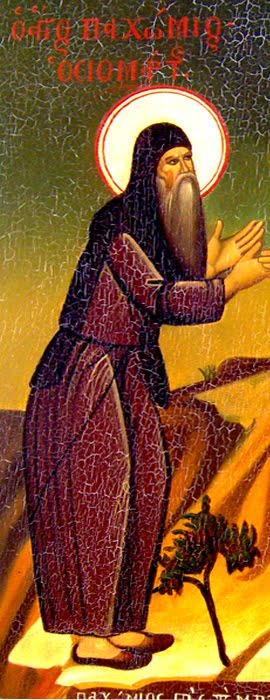
.
Orthodox Saints for May
And
Lives of the Saints
And
Living with the Church – Orthodoxie.com
May 21
† Holy Equals-to-the-Apostles Emperor Constantine (337 A.D.)
and Helen, his mother (327 A.D.)
Saint Constantine was born in 272, the son of Constantius Chlorus, ruler of the western part of the Roman Empire, and St Helen. When his father died in 306 he was proclaimed successor to the throne. The empire was ruled at that time by several Caesars, each with his own territory. When Constantine learned that the Caesars Maxentius and Maximinus had joined against him, he marched on Italy. It was there that, on the eve of a decisive battle outside Rome, he saw in the sky a radiant Cross with the words "In this sign conquer." He ordered that a battle-standard be made bearing the image of a cross and inscribed with the Name of Jesus Christ. The following day he and his forces attacked and won a spectacular victory. He entered Rome in triumph and in 312 was proclaimed "Emperor of the West" by the Senate. (His brother-in-law Licinius ruled in the East.) Soon thereafter he issued his "Edict of Milan," whereby Christianity was officially tolerated for the first time, and persecution of Christians ceased. (Many believe, mistakenly, that the Edict made Christianity the only legal religion; in fact, it proclaimed freedom of religion throughout the Empire).
Licinius, though he pretended to accept the Edict, soon began persecuting Christians in his domain. In response, Constantine fought and defeated him in 324, becoming sole Emperor of the entire Roman Empire. In 324 he laid the foundations of a new capital in the town of Byzantium; in 330 he inaugurated the new capital city, naming it "New Rome" and "Constantinople." In 325 he called the First Ecumenical Council at Nicea, attending its sessions himself. Shortly before his repose in 337, he received Holy Baptism; he died on Holy Pentecost, at the age of sixty-five, and was interred in the Church of the Holy Apostles in Constantinople.
St Constantine's holy mother Helen, in her role as "Augusta" of the Empire, founded countless churches. She traveled to Jerusalem and found the True Cross on which the Lord was crucified. In the Holy Land she established churches at the sites of Christ's Nativity and burial, which still stand today in much-modified form. She died at about eighty years of age.
• Holy New Martyr Pachomius (1730 A.D.)
Born in a village of Little Russia (now Belarus), he was kidnapped as a boy and sold to a Turkish tanner as a slave. He spent the next twenty-seven years in Usaki in Asia Minor, where he was forced to embrace Islam. After long years of servitude he escaped and, reclaiming his Christianity, went to the Holy Mountain, became a monk and lived for twelve years. Tormented by his former apostasy, he determined to suffer martyrdom for Christ. With the permission of his elder, Joseph, he returned to Usaki and showed himself to his former owner wearing his monastic habit. He was tortured, thrown into prison, and finally beheaded on on Ascension Day of 1730. His relics are buried on the island of Patmos in the Church of St John the Theologian, where they work many miracles.
.
Last edited:

